Being immersed in a new place and culture for longer than a week definitely opens more windows than the casual tourist might experience. This has been one of the many fortunate elements of our journeys this year. Our month in Granada has been a testament to this type of travel, as Trisha and I have gained significantly more insights into Nicaragua than we otherwise would have. That said, here are a few interesting tidbits about this place we would have missed with a smaller visit.
Friendly Nicas: The tour books are correct; this is a very friendly country. Sure not everyone here is sugar and spice, but the majority are overwhelmingly amicable and interested in getting to know you. A good example is from the coffee shop Trisha and I frequented while here. At least three of its employees have gone out of their way to introduce themselves, ask us numerous questions, and refer to us by name every time we stop by. One woman in particular befriended us to the extent of inviting us to her home to celebrate Christmas (we had to decline as we had Christmas plans with our host-family). On another occasion while sitting near the giant Lake Nicaragua, an older police officer came and sat next to me only to chat. Despite my less than fluent Spanish skills and inability to catch all of what he was saying, he spent a good half hour just passing the time in conversation. Even some of our cab drivers have shared about their families, asked us about trips, and given us their insight into the essence of Nicaragua.
True Nicaraguan Transportation: Having Granada as a base camp has allowed us to make numerous excursions to nearby venues. With the luxury of time on our hands, we have been able to experience the true method of Nicaraguan travel- the yellow school bus. Nicaragua does have a variety of bus options, such as the comfortable intercontinental lines (similar to very nice Greyhound buses), express mini-buses, and inter-city buses. However the suped-up yellow school buses are the true method of transportation for the majority of locals. These brightly painted buses usually come in a variety of colors and designs and are fitted with roof racks and rear exhaust pipes that reach to the sky. They are cultural lesson all their own.
The actual concept of riding in a bus in an unfamiliar, non-English speaking country, sounds difficult on paper. It turns out that in Nicaragua it couldn’t be easier. You first begin by searching for the bus station in your town, which is usually a large dirt field. There will be at least one or two people directing you toward this field should you be lost. Once in the lot, finding your bus is a piece of cake. Simply look at the signs on the top of the buses where the final destination is clearly printed. These destinations never change, as a Granada to Masaya bus is always a Granada to Masaya bus, or visa versa. After locating the bus, listen for one or two men shouting repeatedly at the top of their lungs the final destination of your bus. This yell will be replicated throughout your destination, as all the people your bus will be stopping for along the way (the whole way) will need to hear the bus approaching to get ready for the brief second they will have to hop on. For the few who actually get on the bus at the original destination, the departure usually occurs close to the hourly of half-hourly interval, but many times when the bus is close to full. The bus will likely be packed after a few stops, but this makes little difference as more people, means more tickets sold. While waiting for the bus to depart, you can stock up on goodies as a steady stream of venders climb aboard to sell food, sodas, candy, and other various items. A popular purchase item is soda, which is poured into a plastic bag and slurped out with a straw, and when finished, dropped out the window for disposal. As mentioned before, once your bus departs, be prepared to stop multiple times to pick up anyone along the road who wants a ride. Of course everyone pays for a ticket no matter when you begin your ride, and all tickets are inexpensive. For the remainder of your trip just marvel at the scenery, checkout the locals, breath in a little dust, and bump along to your next destination.
Traditional Nicaraguan Christmas: We spent Christmas with our host-family in Granada and witnessed a typical Nicaraguan holiday celebration. Christmas festivities are reserved for the 24th, with the 25th being reserved for recuperation time. Although Trisha and I ate early that night, the family did not begin until around 10:30 p.m. Dinner can be even later in some circumstances on this evening, as that is the tradition. Pork stuffed with something tasty was on the menu, along with a small side salad. Our host family members are not big drinkers at all, but on this night the downing of beers began around 9:00 and went on throughout the evening. Supposedly the three major holidays here have the tradition of putting-back cold ones, and working off the hangover the next day. Although no one in the family got drunk, the atmosphere was golly and music and dancing ensued. At 11:00 the family, and extended family, took their respective rocking chairs, lined up on the sidewalk in front of the house, and began their Christmas dinner. Their meal was the same as the one we had at eight, although they consumed a few more helpings than us.
At around 11:30 p.m. as Trisha and I were trying to keep our eyes open, the rocking chairs were moved next to the giant plastic Christmas tree and present opening began. 98% of the presents were for the two grandchildren in the family, as gift exchanges among friends and family members in Nicaragua is not typical. Our family gave us a few Nicaraguan keepsakes such as a keychain and maraca. At 12:00 p.m. as the Eve turned to Christmas Day, the city streets filled with loud fireworks as all households celebrated in unison the Navidad. Our family had a long roll of fireworks similar to those of the other households. These fireworks produced no light, but instead deafening sound. We plugged our ears for a good five minutes as the fireworks exploded and then eventually resumed the celebrations. Trisha and I hung in there for about another twenty minutes and then called it a night. The remainder of the family stayed talking and drinking beer until around 3:00 a.m. And that was Christmas. The actual day had no festivities, but we were told many of the locals headed to the lake for the day. I never found out as I spent all day in bed with some flu-like symptoms.
Nicaraguan Streets: Want to see if those new shocks on your car are worth the price you paid? Come here and test them for free. This is the land of the pothole and open manholes just waiting to swallow up an untested driver and their auto. It is also the land of roaming horses and livestock, along with stray dogs and processions of humanity making their way along a side street or interstate. Sure, there are many roads that are quite normal, and everyone seems to do just fine on both the normal and treacherous. But there are times you can’t imagine the talent is must day to keep your car in one piece if driving were part of your daily routine. I think of one side street near our house where there is a 4 foot by 6 foot hole in the middle of it. I’m not sure if this was roadwork that was one day abandoned, or some cruel joke the neighbors are waiting to see someone literally fall for. Regardless, I pity the person who doesn’t see that obstacle in the middle of the night. I also remember one day watching a horse standing in the middle of the main thoroughfare in Granada. It was minding its own business, eating the grass that lined the median of the busy street. The cars, bikes, and motorcycles that zoomed by didn’t seem to mind either, as this symbiotic occurrence was as common as the days are hot here. After two hours of teaching, I returned to find the horse chewing on new grass only a few paces away from the original destination with motorists making their way around in the same speedy way. Oh yeah, there was another time when Trisha and I passed a manhole full of water. No big deal we thought, it’s just a big hole full of water. To our amazement a head suddenly popped up through the black water and what looked like a local worker making some repairs below appeared. With a screwdriver and wrench in his grasp, he took another keep breath and descended into the dark abyss of the manhole. By the way this watery manhole was not blocked off at all and had cars proceeding as normal in all directions.
The Other Nicaraguans: – I am not referring to the indigenous populations that inhabit many of the remote interior parts of Nicaragua. Nor am I referring to the Nicaraguans of African decent who inhabit the Caribbean side of the country. The other Nicaraguans are actually not Nicaraguans at all, but the mostly European and some Canadian and American citizens who have purchased real estate here and set up homes and/or businesses. Basically, there are a lot of Europeans (mostly Germans and French) in the more popular tourist destinations here who own many of the hotels, restaurants, and cafes. Trisha and I have found this two be a two-sided coin. On the one side, these establishments are typically very lovely, well run, and employ only locals other than the owners themselves. Some establishments such as the famous Selva Negra coffee plantation and guest chalet are run by third generation Germans in Nicaragua. So they have put their time in. On the other side, we often wish that the best places here were not foreign run or established, but rather 100% Nicaraguan. The large majority of businesses and shops, and many hotels are Nica, but they can vary significantly in quality. I am not sure of the consensus of opinion of locals on foreign business folk, but there seems to be good relations. For us tourists, it can provide for a nice establishment, but somehow the authenticity seems depreciated.
Cruising Nica Style: Although I’m sure this form of transportation is not unique to just Nicaragua, the locals here do it exceptionally well. And that is the art of turning a normal bicycle into a family mini-van. Since bicycles are an excellent choice for scooting around town quickly here, why not add another two or three people? It is not common to see a father riding a bike, the mother sitting sidesaddle in the middle holding a baby, and another young one holding onto the handlebars in front. More common are men riding their wives or girlfriends around (always sitting side-saddle) or boys and adolescent males riding their friends around (not sitting sidesaddle….ouch!) However it’s done, they do it effortlessly. Trisha and I rent bikes often, and are sweaty and breathing hard in no time at all. The locals, always well-dressed and clean, never seem to break a sweat as they pedal the family through the hot side-streets of town. The balance they must have! The women sit across the bike like they were sitting on a sofa in a living room. And the little children are too cute as they grasp the handlebars with all their might. Although no one wears helmets while cruising, I think it's safe to say accidents involving balance and spills are rare among the Nicas. This form of transportation is definitely and art-form, and one done well by the majority who live here.
And those are just a few tidbits from this interesting country.
Thursday, January 1, 2009
Subscribe to:
Post Comments (Atom)
About Us
Spain

Excursion to Toledo

The Toldeo Cathedral

....supposedly one of the most beautiful in all of Europe

The city (the former capital of Spain) is on top of a hill, surrounded by a stone wall


the narrow city streets were an adventure to walk on

lovely city streets...

The top of a mosque
The "Bullet Train"

This high speed train runs over 200 miles an hour! We traveled a distance of 100 miles in 30 minutes flat. Amazing.

Excited for our first trip outside of Madrid

Another typical plaza in the center of the city. As usual, late in the day all the folks gather together and sit and catch up on their days. Very pleasant!

I loved watching this sweet elderly man pacing the square. Looks like he might have benefited from drinking more milk though in his younger days!

Our first "Menu of the Dia." This is my 1st course of their famous gaspacho- served more pureed and smooth here than how we make it in CA...

a view from on top of the city


love the flowers and shadows
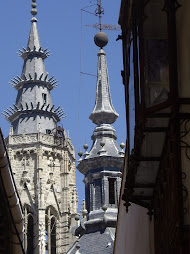
The Packing Nightmare!

We actually lived amongst this for several days!
Down to the last load...

Goodbye to our apartment... now we're homeless!


















































































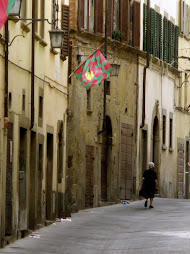















































































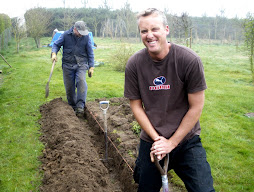
























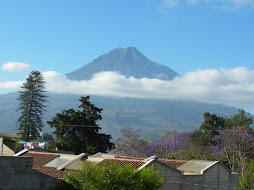









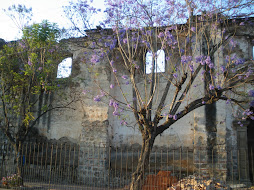


























































































































































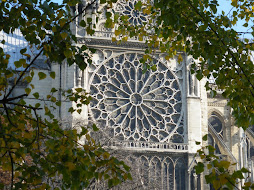





































































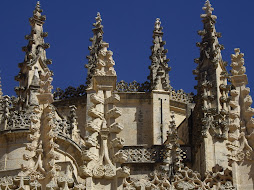









































1 comment:
So good to catch up with you once again! Sounds like you're settling in quite nicely!! :-) Interesting Christmas, huh?!?! Fun to hear how other cultures celebrate the holidays! Hope you're having a Happy New Year!!
Vonnie
Post a Comment